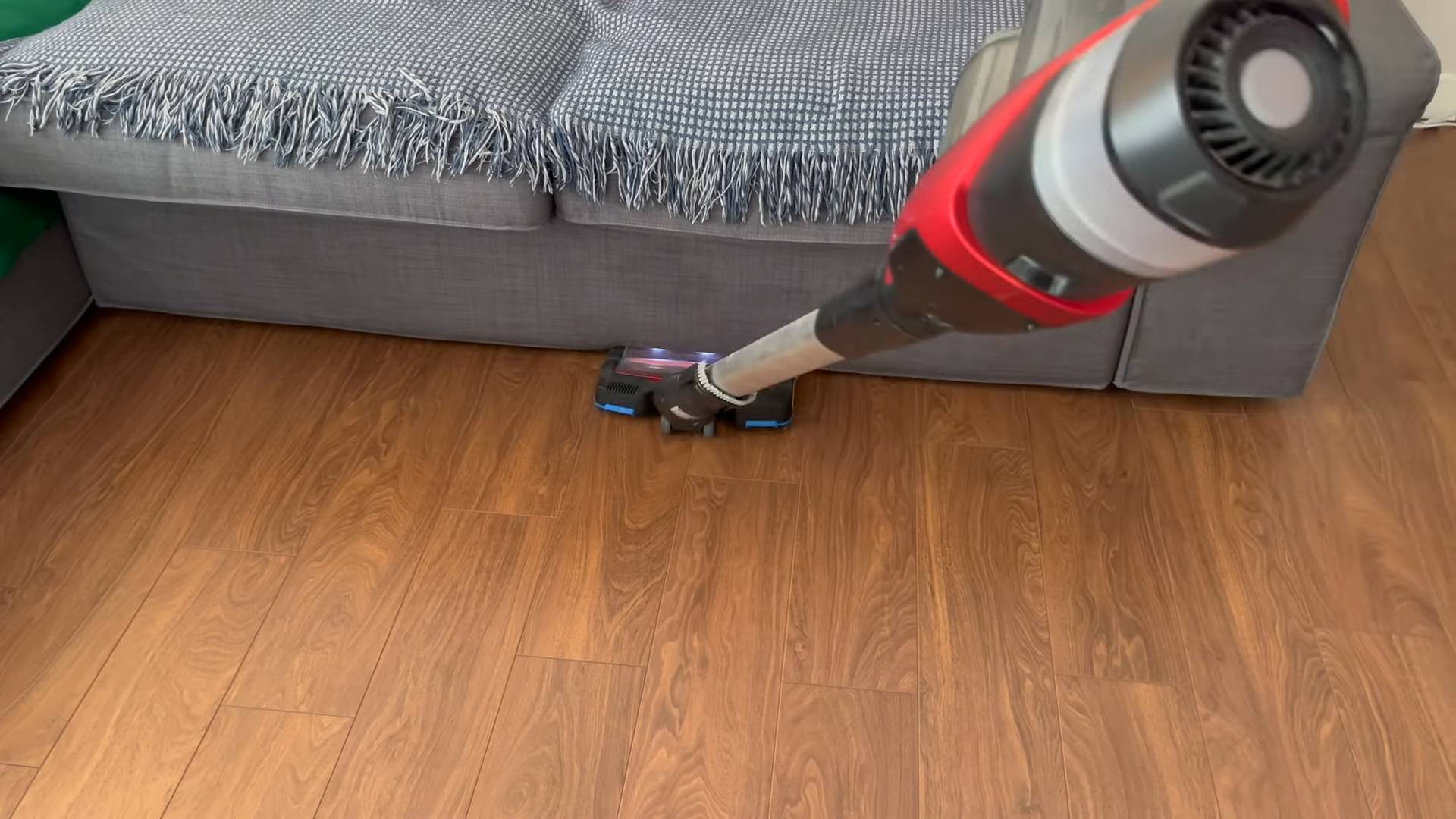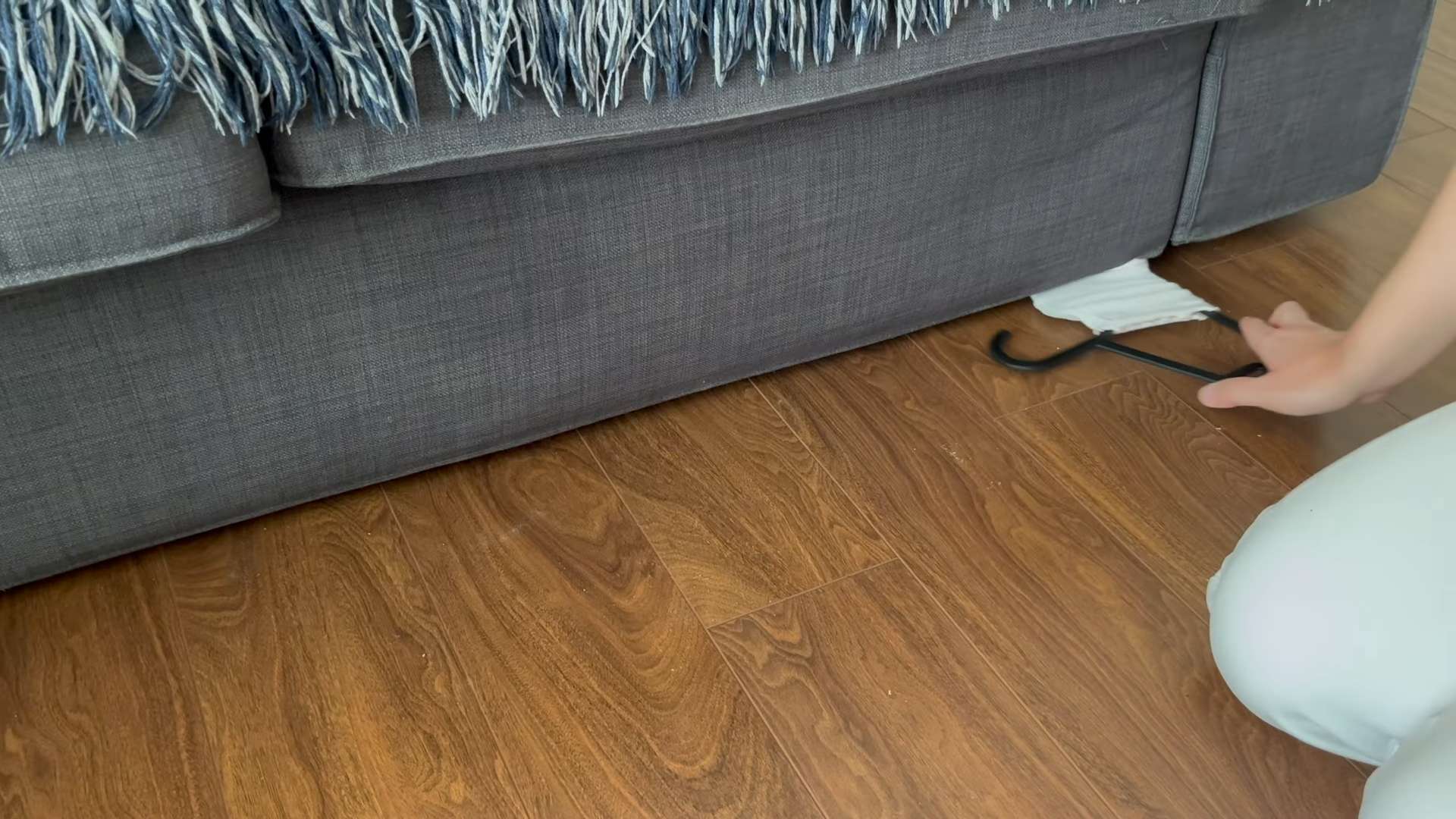Smart Home Automation Tips are no longer a futuristic fantasy; they’re a present-day reality transforming how we live! Ever dreamed of controlling your lights, thermostat, and security system with a simple voice command or a tap on your phone? Well, dream no more! For centuries, humans have sought ways to make life easier and more efficient. From ancient irrigation systems to the invention of the light bulb, we’ve always strived for progress. Now, smart home technology is the next step in that evolution, offering unparalleled convenience and control.
But let’s be honest, diving into the world of smart home automation can feel overwhelming. Where do you even begin? That’s where this DIY guide comes in! I’m here to break down the complexities and show you how to implement simple, yet effective, smart home automation tips that won’t break the bank. Whether you’re looking to boost your home’s security, save energy, or simply add a touch of modern convenience, I’ve got you covered. Let’s unlock the potential of your home and make it work smarter, not harder, for you!

DIY Smart Home Automation: A Beginner’s Guide
Okay, so you’re ready to dive into the world of smart home automation? Awesome! It’s surprisingly easier than you might think, and the convenience it adds to your life is totally worth it. I’m going to walk you through some simple projects you can tackle yourself, even if you’re a complete newbie. We’ll focus on affordability and ease of implementation. Let’s get started!
Choosing Your Smart Home Hub
Before we jump into specific projects, let’s talk about the brain of your smart home: the hub. This is the device that connects all your smart devices and allows them to communicate with each other and with you. There are a few popular options, each with its own pros and cons.
* **Amazon Echo (with built-in Zigbee hub):** A great starting point, especially if you already use Alexa. It’s relatively inexpensive and easy to set up. The built-in Zigbee hub allows you to directly connect some smart devices without needing a separate hub.
* **Google Nest Hub (2nd gen):** Another excellent option if you’re invested in the Google ecosystem. It integrates seamlessly with Google Assistant and offers a user-friendly interface.
* **Samsung SmartThings Hub:** A more robust option that supports a wider range of protocols (Zigbee, Z-Wave, Wi-Fi). It offers more advanced customization and control.
* **Hubitat Elevation:** For the more technically inclined, Hubitat offers local control, meaning your automations will still work even if your internet goes down. It requires a bit more setup but offers unparalleled flexibility.
For this guide, I’ll primarily focus on using an Amazon Echo with a built-in Zigbee hub, as it’s the most accessible for beginners. But the general principles apply to other hubs as well.
Project 1: Smart Lighting
Smart lighting is one of the easiest and most rewarding smart home projects. Imagine turning your lights on and off with your voice, setting schedules, or even having them automatically adjust based on the time of day. Here’s how to do it:
What You’ll Need:
* Smart Bulbs (Zigbee compatible if using an Echo with built-in hub, otherwise Wi-Fi bulbs will work)
* Your Smart Home Hub (Amazon Echo, Google Nest Hub, etc.)
* A Smartphone with the corresponding app (Alexa app, Google Home app, etc.)
Step-by-Step Instructions:
1. **Install the Smart Bulbs:** Screw the smart bulbs into your desired light fixtures, just like you would with regular bulbs.
2. **Connect to Your Hub:**
* **Amazon Echo (Zigbee):** Put your Echo into pairing mode by saying, “Alexa, discover devices.” The Echo will automatically search for Zigbee devices, including your smart bulbs. Follow the on-screen prompts in the Alexa app to complete the setup.
* **Amazon Echo (Wi-Fi):** Download the bulb’s companion app (e.g., Philips Hue, TP-Link Kasa). Follow the app’s instructions to connect the bulb to your Wi-Fi network. Then, enable the corresponding skill in the Alexa app (e.g., Philips Hue skill, TP-Link Kasa skill) and link your accounts.
* **Google Nest Hub:** Open the Google Home app and tap the “+” icon. Select “Set up device” and follow the instructions to connect your smart bulbs to your Wi-Fi network.
3. **Name Your Bulbs:** Once the bulbs are connected, give them descriptive names (e.g., “Living Room Lamp,” “Kitchen Overhead”). This will make it easier to control them with your voice.
4. **Create Groups:** Group your bulbs together to control multiple lights at once. For example, you could create a “Living Room” group that includes all the lights in your living room.
* **Alexa:** In the Alexa app, go to “Devices,” tap the “+” icon, and select “Add Group.” Follow the prompts to create your group and add your bulbs.
* **Google Home:** In the Google Home app, tap the “+” icon, select “Create group,” and follow the prompts to create your group and add your bulbs.
5. **Test Your Setup:** Try controlling your lights with your voice. For example, say, “Alexa, turn on the Living Room lights” or “Hey Google, dim the Kitchen lights to 50%.”
Project 2: Smart Plugs
Smart plugs are a fantastic way to automate appliances and devices that aren’t inherently “smart.” Think lamps, fans, coffee makers, and even holiday decorations.
What You’ll Need:
* Smart Plugs (Wi-Fi is generally the easiest option)
* Your Smart Home Hub (Amazon Echo, Google Nest Hub, etc.)
* A Smartphone with the corresponding app (Alexa app, Google Home app, etc.)
Step-by-Step Instructions:
1. **Plug in the Smart Plug:** Plug the smart plug into a standard electrical outlet.
2. **Connect to Your Hub:**
* **Amazon Echo:** Download the smart plug’s companion app (e.g., TP-Link Kasa, WeMo). Follow the app’s instructions to connect the smart plug to your Wi-Fi network. Then, enable the corresponding skill in the Alexa app and link your accounts.
* **Google Nest Hub:** Open the Google Home app and tap the “+” icon. Select “Set up device” and follow the instructions to connect your smart plug to your Wi-Fi network.
3. **Name Your Smart Plug:** Give the smart plug a descriptive name (e.g., “Living Room Lamp,” “Coffee Maker”).
4. **Plug in Your Device:** Plug the appliance or device you want to control into the smart plug.
5. **Test Your Setup:** Try controlling the device with your voice. For example, say, “Alexa, turn on the Coffee Maker” or “Hey Google, turn off the Living Room Lamp.”
Project 3: Voice-Controlled Entertainment
Controlling your TV and other entertainment devices with your voice is incredibly convenient. This project requires a compatible smart TV or a universal remote that works with your smart home hub.
What You’ll Need:
* A Smart TV (compatible with Alexa or Google Assistant) or a Universal Smart Remote (e.g., Logitech Harmony Hub)
* Your Smart Home Hub (Amazon Echo, Google Nest Hub, etc.)
* A Smartphone with the corresponding app (Alexa app, Google Home app, etc.)
Step-by-Step Instructions (Smart TV):
1. **Connect Your Smart TV to Your Wi-Fi Network:** Ensure your smart TV is connected to the same Wi-Fi network as your smart home hub.
2. **Enable Voice Control:**
* **Amazon Echo:** Enable the Alexa skill for your TV brand (e.g., Samsung SmartThings, LG ThinQ). Follow the skill’s instructions to link your accounts.
* **Google Nest Hub:** Your Google Nest Hub should automatically detect your compatible smart TV. If not, open the Google Home app, tap the “+” icon, select “Set up device,” and follow the instructions.
3. **Test Your Setup:** Try controlling your TV with your voice. For example, say, “Alexa, turn on the TV” or “Hey Google, change the channel to CNN.”
Step-by-Step Instructions (Universal Smart Remote):
1. **Set Up the Universal Smart Remote:** Follow the manufacturer’s instructions to set up the universal smart remote and connect it to your Wi-Fi network.
2. **Add Your Devices:** Use the remote’s app to add your TV, cable box, sound system, and other entertainment devices.
3. **Connect to Your Hub:**
* **Amazon Echo:** Enable the Alexa skill for your universal smart remote (e.g., Logitech Harmony). Follow the skill’s instructions to link your accounts.
* **Google Nest Hub:** Your Google Nest Hub should automatically detect your compatible universal smart remote. If not, open the Google Home app, tap the “+” icon, select “Set up device,” and follow the instructions.
4. **Test Your Setup:** Try controlling your devices with your voice. For example, say, “Alexa, turn on the TV” or “Hey Google, turn up the volume.”
Project 4: Creating Routines
This is where the real magic happens! Routines allow you to automate multiple actions with a single voice command or trigger. For example, you could create a “Good Morning” routine that turns on your lights, starts your coffee maker, and plays your favorite news station.
What You’ll Need:
* Your Smart Home Hub (Amazon Echo, Google Nest Hub, etc.)
* A Smartphone with the corresponding app (Alexa app, Google Home app, etc.)
* Connected Smart Devices (lights, plugs, etc.)
Step-by-Step Instructions (Alexa):
1. **Open the Alexa App:** Launch the Alexa app on your smartphone.
2. **Go to Routines:** Tap the menu icon (three

Conclusion
So, there you have it! Transforming your living space into a smart home doesn’t require a massive budget or a degree in electrical engineering. These DIY smart home automation tips are designed to be accessible, affordable, and, most importantly, effective. We’ve explored simple yet impactful ways to automate lighting, security, entertainment, and even climate control, all with readily available tools and a little bit of ingenuity.
Why is this a must-try? Because it’s about more than just convenience. It’s about creating a home that anticipates your needs, enhances your security, and contributes to a more energy-efficient lifestyle. Imagine waking up to gradually brightening lights, automatically adjusting the thermostat based on the weather forecast, or receiving instant alerts if an unexpected entry occurs while you’re away. These are just a few of the benefits that await you when you embrace the world of DIY smart home automation.
But don’t stop there! The beauty of DIY is the opportunity for personalization and experimentation. Consider expanding your smart lighting system with color-changing bulbs to set the mood for different occasions. Explore integrating voice assistants like Amazon Alexa or Google Assistant for hands-free control. You could even delve into creating custom routines that automate multiple devices simultaneously, such as a “Goodnight” routine that turns off all the lights, locks the doors, and sets the alarm with a single command. Think about adding smart plugs to control appliances like coffee makers or slow cookers, allowing you to start your day or prepare dinner remotely. The possibilities are truly endless.
Remember, the key to successful DIY smart home automation is to start small, experiment, and learn as you go. Don’t be afraid to try new things and adapt these tips to fit your specific needs and preferences. The goal is to create a smart home that truly enhances your life, not complicates it.
We are confident that these tips will empower you to take control of your home and transform it into a smarter, more efficient, and more secure living space. So, what are you waiting for? Dive in, get creative, and start automating your home today!
We’d love to hear about your experiences! Share your successes, challenges, and creative solutions in the comments below. Let’s build a community of DIY smart home enthusiasts and inspire each other to create even smarter homes. Your insights could be invaluable to others just starting their smart home journey. Let us know which of these smart home automation tips worked best for you, or if you have any other tips to share!
Frequently Asked Questions
What are the essential components I need to get started with DIY smart home automation?
The beauty of DIY smart home automation is that you can start with just a few key components and gradually expand your system as needed. A good starting point includes:
* **Smart Plugs:** These allow you to control appliances and devices remotely using your smartphone or voice assistant.
* **Smart Bulbs:** These offer dimming, color changing, and scheduling capabilities, enhancing your lighting control.
* **Smart Hub (Optional):** While not always necessary, a smart hub can act as a central control point for multiple devices, especially those using different communication protocols like Zigbee or Z-Wave. Popular options include Samsung SmartThings and Hubitat Elevation.
* **Wi-Fi Router:** A stable and reliable Wi-Fi network is crucial for connecting your smart devices to the internet and enabling remote control.
* **Smartphone or Tablet:** You’ll need a smartphone or tablet to install and configure the apps that control your smart devices.
Is DIY smart home automation secure? What steps can I take to protect my privacy?
Security is a paramount concern when it comes to smart home automation. Here are some steps you can take to protect your privacy and security:
* **Strong Passwords:** Use strong, unique passwords for all your smart device accounts and your Wi-Fi network. Avoid using default passwords.
* **Two-Factor Authentication (2FA):** Enable 2FA whenever possible to add an extra layer of security to your accounts.
* **Firmware Updates:** Regularly update the firmware of your smart devices to patch security vulnerabilities.
* **Network Segmentation:** Consider creating a separate Wi-Fi network for your smart devices to isolate them from your primary network. This can help prevent a compromised device from affecting your other devices.
* **Privacy Settings:** Review the privacy settings of your smart devices and apps and disable any features that you don’t need or that collect excessive data.
* **Secure Router:** Ensure your Wi-Fi router is using the latest security protocols (WPA3 is recommended) and has a strong password.
* **Research Devices:** Before purchasing a smart device, research the manufacturer’s security practices and read reviews to identify any potential security concerns.
What are some common challenges I might encounter when setting up my smart home, and how can I troubleshoot them?
Setting up a smart home can sometimes be challenging. Here are some common issues and troubleshooting tips:
* **Connectivity Issues:** Ensure your smart devices are within range of your Wi-Fi router and that your Wi-Fi network is stable. Try restarting your router and devices.
* **Compatibility Issues:** Not all smart devices are compatible with each other. Check compatibility before purchasing devices, especially if you plan to use a smart hub.
* **App Issues:** Make sure you have the latest version of the app installed and that you’re logged in with the correct credentials. Try clearing the app’s cache and data or reinstalling the app.
* **Device Not Responding:** If a device is not responding, try restarting it or checking its power source. You may also need to reset the device and re-pair it with your network.
* **Interference:** Other electronic devices can sometimes interfere with the communication between your smart devices. Try moving your devices away from potential sources of interference, such as microwaves or cordless phones.
Can I integrate my existing appliances into my smart home system?
Yes, you can integrate many existing appliances into your smart home system using smart plugs or smart outlets. Simply plug your appliance into a smart plug, and you’ll be able to control it remotely using your smartphone or voice assistant. This is a great way to add smart functionality to devices like lamps, fans, coffee makers, and slow cookers without having to replace them.
What are the benefits of using a smart hub, and is it necessary for all smart home setups?
A smart hub acts as a central control point for your smart devices, allowing them to communicate with each other and with your smartphone or voice assistant. While not always necessary, a smart hub can offer several benefits:
* **Centralized Control:** Manage all your smart devices from a single app or interface.
* **Compatibility:** Connect devices that use different communication protocols, such as Zigbee, Z-Wave, and Wi-Fi.
* **Automation:** Create complex automation routines that involve multiple devices.
* **Improved Performance:** Reduce the load on your Wi-Fi network by connecting devices to the hub instead of directly to your router.
Whether or not you need a smart hub depends on the number and type of smart devices you plan to use. If you only have a few Wi-Fi-based devices, you may not need a hub. However, if you plan to use a variety of devices with different communication protocols, a smart hub can be a valuable addition to your smart home setup.





Leave a Comment